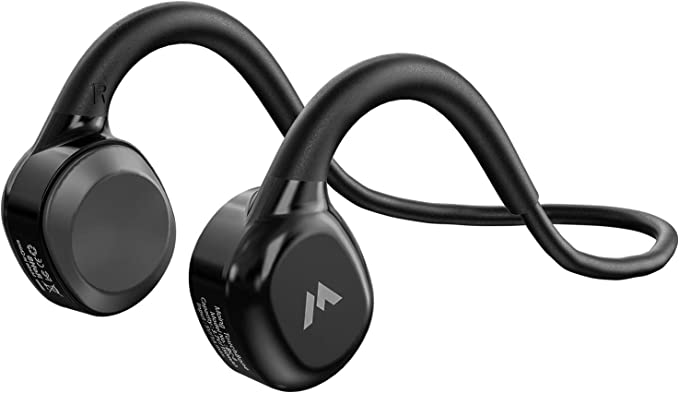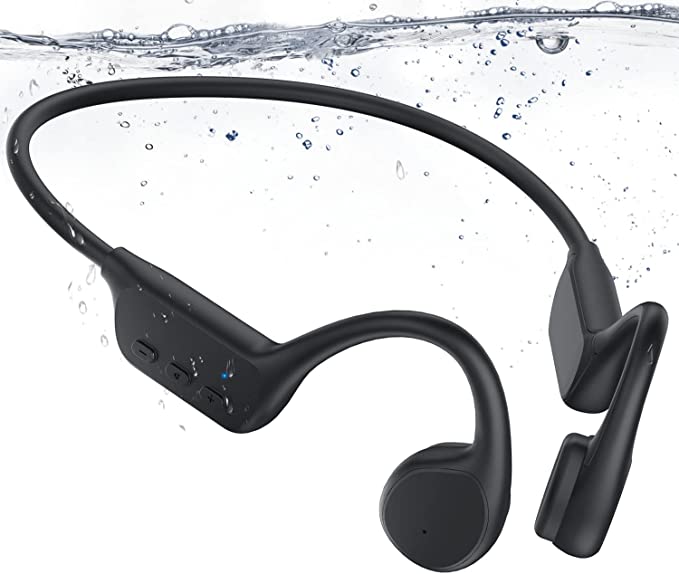The Ultimate Swimmer's Guide to Bone Conduction Headphones
Update on Oct. 19, 2025, 1:01 p.m.
If you’re a swimmer, you know the rhythm of the pool: the splash, the pull, the exhale. You also know the monotony that can set in around lap 20. A killer playlist could transform that grind into a glide, but the world of “waterproof” audio is notoriously confusing. This guide is for you. It’s a no-nonsense walkthrough from a fellow swimmer on how to actually make these amazing gadgets work for your workout. We’ll use the Hamuti X7 as our example, as it ticks all the right boxes for a great swimming companion.

Level 1: Understanding Your “Pool Pass” (IP68)
First things first. You’ll see “IP68” advertised on any decent pair of swimming headphones. What does it mean? Think of it as their official entry ticket to the pool. The ‘IP’ stands for Ingress Protection. The ‘6’ means they are completely dust-tight (less important for us). The ‘8’ is what matters: it certifies the device can handle continuous immersion in water, typically deeper than 1 meter. A lesser rating like IPX7 might be fine for rain, but for repeated, sustained swimming, IP68 is the non-negotiable standard.
Level 2: The Art of Wearing Them
So, you’ve confirmed your headphones have the IP68 “pool pass.” But getting them to stay comfortable and secure for a 45-minute swim is an art form in itself. After much trial and error, here is the swimmer-approved sequence:
- Headphones First: Place the bone conduction headphones on your head. The transducers should rest on your cheekbones, just in front of your ears, and the band will wrap around the back of your head.
- Swim Cap Second: Gently pull your swim cap on, stretching it over the headphones. The cap does a fantastic job of locking the headset in place, preventing it from shifting during flip-turns.
- Goggles Last: Put on your goggles. The goggle strap should go over the swim cap and can even sit on top of the headphone arms for a final, secure layer of stability.
This order ensures maximum stability and comfort, preventing the dreaded mid-lap adjustment.
The Main Event: Embracing MP3 Mode
Now that your headset is perfectly in place, it’s time to load it with your power playlist. This is the crucial step that separates swimming headphones from all other wireless gear. As we’ve covered elsewhere, Bluetooth does not work underwater. You must use the built-in music player.
It might sound technical, but it’s simple. Your headphones function just like a USB flash drive. * Connect: Use the magnetic charging cable to connect the headphones to a USB port on your computer. Your computer will recognize it as a new drive (like “HAMUTI X7”). * Drag & Drop: Find your music files on your computer. They need to be in a format like MP3, which is the most common. Simply drag the files you want and drop them into the headphone’s drive folder. * Eject & Switch: Safely eject the device from your computer. To switch from Bluetooth to MP3 mode, there’s usually a dedicated button or a sequence (on the Hamuti X7, it’s often a quick double-press of the power button). A voice prompt will confirm you’re in “Music Mode.”
That’s it. Your music is now stored locally, safe from water’s signal-blocking effects.
The Hidden Perk: The Underwater Sound Booth
With your favorite tracks locked and loaded, you’re ready for the magic. And you’re about to discover something wonderful: the sound quality is often better underwater. It sounds clearer and more immersive. Why? On land, you hear both the bone-conducted vibrations and ambient air-conducted noise. Underwater, with your ears filled, the “noise” of splashing and water rushing past is dampened. Your brain can focus almost entirely on the clean vibrations delivered directly to your inner ear.
Pro-Tip: For an even better experience, use the silicone earplugs that often come with these headphones. It seems counterintuitive for an “open-ear” device, but by blocking your ear canals completely, you create a private concert hall inside your head. The bone-conducted sound becomes incredibly rich and clear.

Routine Care: Keep Your Partner in Shape
Your headphones are tough, but chlorine and salt are corrosive. After every swim, give them a quick rinse under fresh tap water and pat them dry, paying special attention to the magnetic charging contacts. This simple habit will dramatically extend their life.
You’re all set. The silence of the pool has its own meditative quality, but on days when you need a push, having your favorite music right there with you is a total game-changer. Enjoy the new rhythm.



















